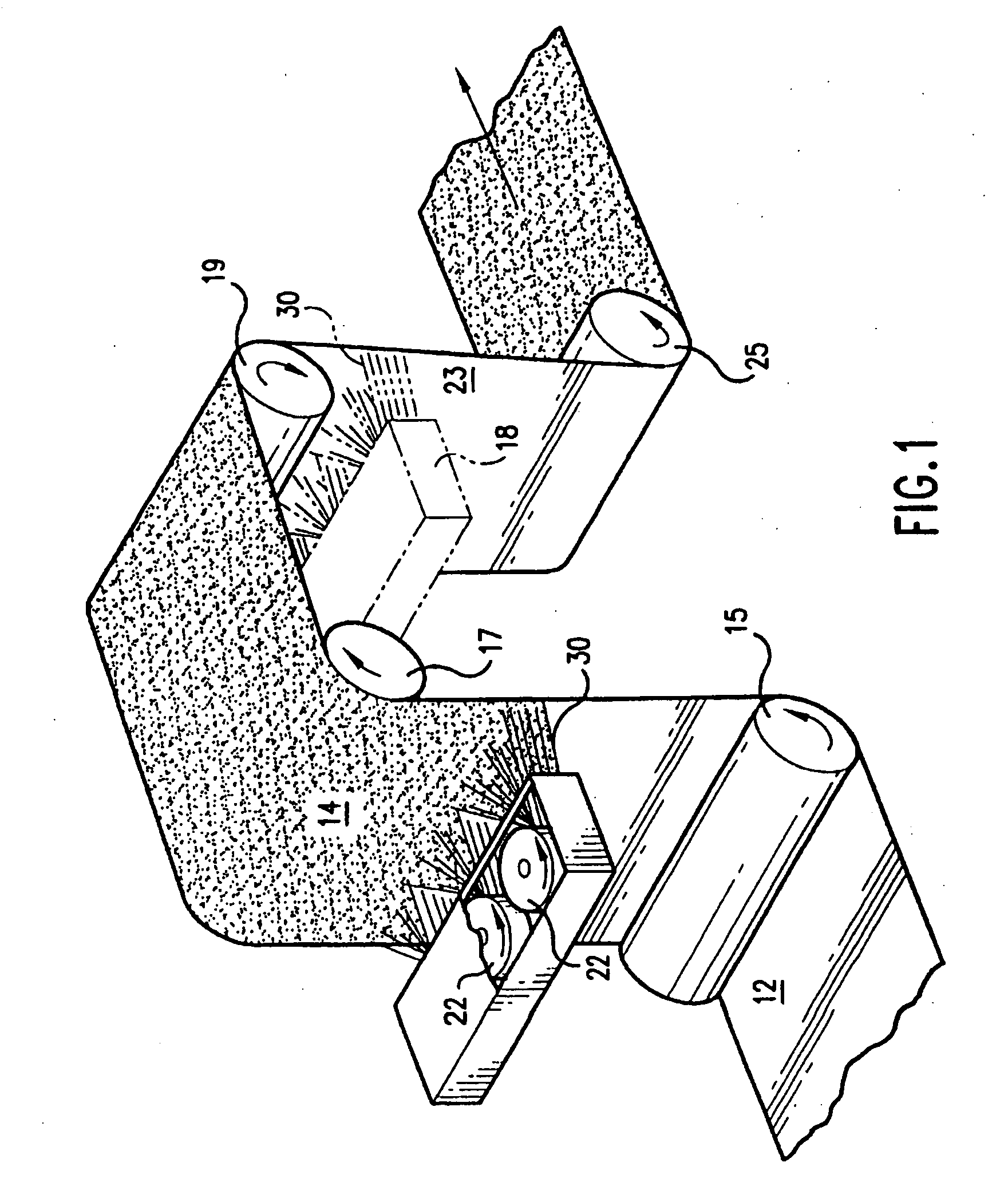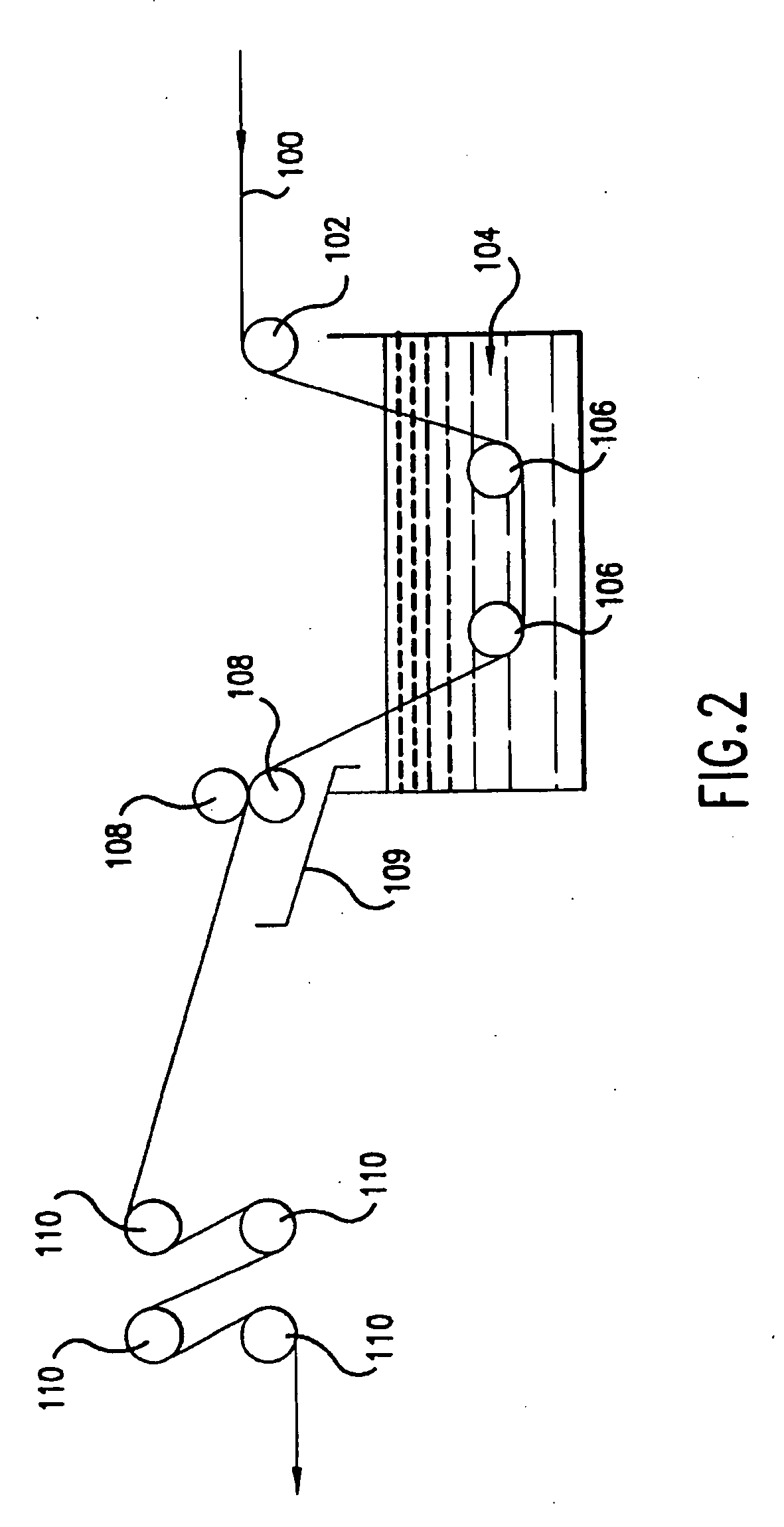Antimicrobial treatment of nonwoven materials for infection control
a technology of antimicrobial treatment and nonwoven materials, applied in the field of chemical treatment, can solve the problems of red, painful, hot, and painful wounds, and the area of the wound becomes red, hot and painful
- Summary
- Abstract
- Description
- Claims
- Application Information
AI Technical Summary
Benefits of technology
Problems solved by technology
Method used
Image
Examples
example 1
Topical Treatment of a Substrate Using a Saturation Process
[0072] For illustration purposes, typically, a 500 ml aqueous formulation is prepared containing 0.5 wt % PHMB+3 wt % citric acid+0.3 wt % Glucopon 220 UP+96.8 wt % water, as shown in Table 3. The relative concentrations of examples in Table 3 are normalized to 100% solids for each ingredient. For example, a 0.5 wt. % PHMB in example 1, indicates that 2.5 g of Cosmocil CQ (which is 20% solids PHMB) was actually used in 100 g solution to achieve an actual 0.5 wt % PHMB in the final composition.
[0073] The aqueous formulation is thoroughly mixed for about 20 minutes using a lab stirrer (Stirrer RZR 50 from Caframo Ltd., Wiarton, Ontario, Canada). Alternatively a high shear mixer can also be used. After the aqueous composition (or bath) has been mixed and homogenized, it is poured into a Teflon coated or glass pan. Then, typically an 8″×11″ hand sheet substrate is immersed into the bath for saturation. Generally, full substrat...
example 2
Topical Treatment of a Substrate Using Overlayer Coating Processes
a. Reverse Roll Coating:
[0074] In reverse roll coating, the coating composition is measured onto the applicator roller by precision setting of the gap between the upper metering roller and the application roller below it. The coating is brushed off the application roller by the substrate as it passes around the support roller at the bottom. The diagrams in FIGS. 3A-C illustrate a 3-roll reverse roll coating process, although 4-roll versions are common. In reverse Gravure coating, the actual coating material is metered by the engraving on a roller before being wiped off as in a conventional reverse roll coating process.
b. Gravure Coating
[0075] The gravure coating depends on an engraved roller running in a coating bath that fills the imprinted dots or lines of the roller with the coating material. The excess coating on the roller is removed by the doctor blade and the coating is then deposited onto the substrate a...
PUM
| Property | Measurement | Unit |
|---|---|---|
| Length | aaaaa | aaaaa |
| Fraction | aaaaa | aaaaa |
| Temperature | aaaaa | aaaaa |
Abstract
Description
Claims
Application Information
 Login to View More
Login to View More - R&D
- Intellectual Property
- Life Sciences
- Materials
- Tech Scout
- Unparalleled Data Quality
- Higher Quality Content
- 60% Fewer Hallucinations
Browse by: Latest US Patents, China's latest patents, Technical Efficacy Thesaurus, Application Domain, Technology Topic, Popular Technical Reports.
© 2025 PatSnap. All rights reserved.Legal|Privacy policy|Modern Slavery Act Transparency Statement|Sitemap|About US| Contact US: help@patsnap.com



